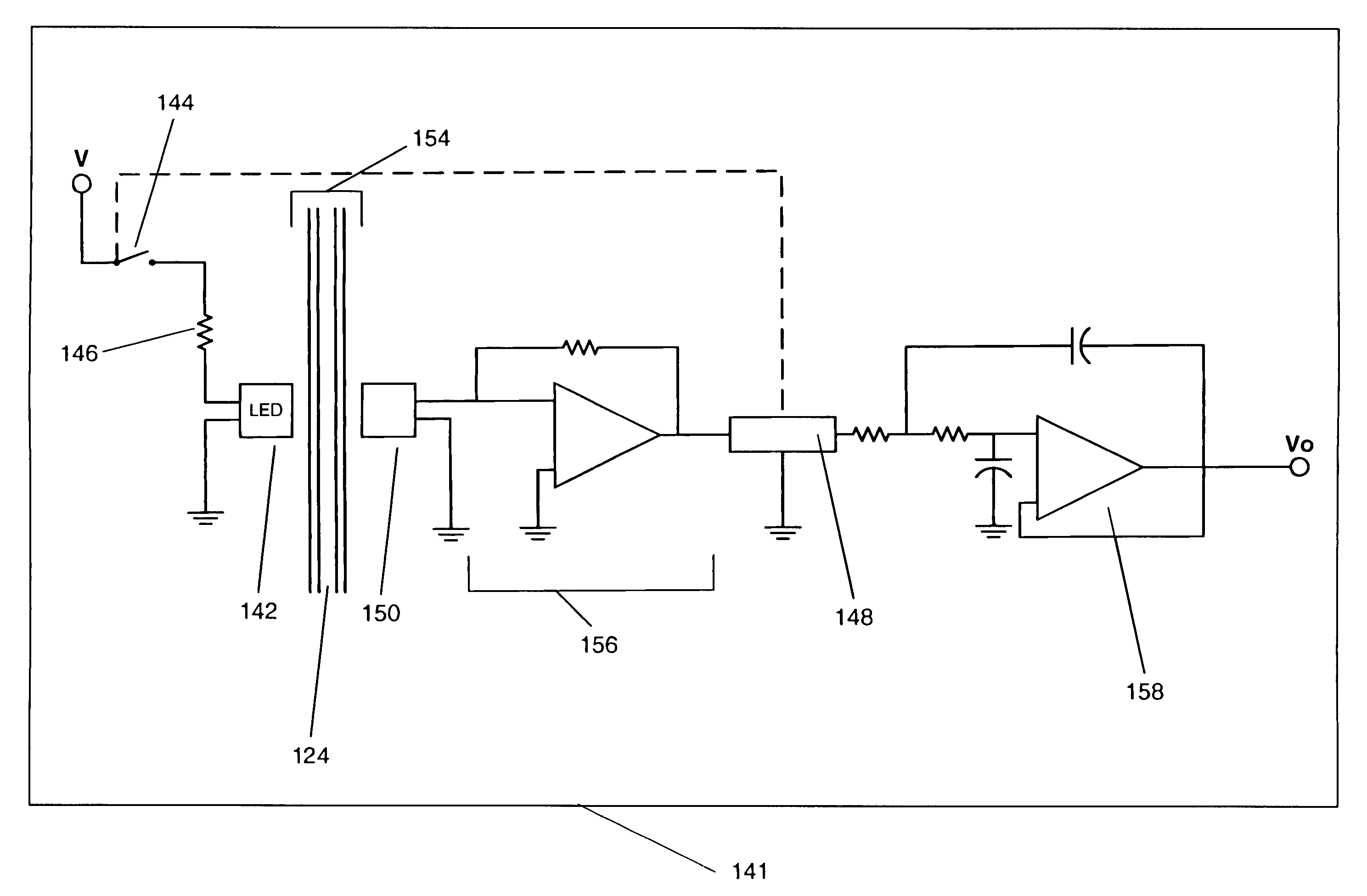Blood leak detector for extracorporeal treatment system
a technology of extracorporeal treatment system and detector, which is applied in the direction of instruments, diagnostic recording/measuring, optical radiation measurement, etc., can solve the problems of electronic components that are prone to drift, require frequent calibration, and lose desirable hemoglobin and blood cells from the blood being returned to the patient, etc., to achieve easy cleaning and not easily drift out of calibration
- Summary
- Abstract
- Description
- Claims
- Application Information
AI Technical Summary
Benefits of technology
Problems solved by technology
Method used
Image
Examples
Embodiment Construction
[0022]FIG. 1 depicts the major components of a blood ultrafiltration system 100 that extracts blood from a vein or artery in a patient 102, removes liquid from the blood in a filter 104, and returns condensed (also referred to as concentrated) blood to the same or other vein or artery of the patient. Condensed blood is blood from which liquids have been removed by ultrafiltration. The hematocrit of condensed blood is generally higher than of the blood before condensation. The ultrafiltration system benefits patients suffering from liquid overload, such as often occurs in patients having a chronic heart failure (CHF) condition. By filtering excessive liquid from the blood, these patients are relieved of the discomfort of liquid build up in their lungs, extremities and other portions of their body.
[0023] To withdraw blood, a withdrawal tube 106 is connected to a withdrawal cannula 102 inserted into a vein of the patient. The tube 106 leads the withdrawn blood to a blood pump 108 whic...
PUM
| Property | Measurement | Unit |
|---|---|---|
| wavelength | aaaaa | aaaaa |
| depth | aaaaa | aaaaa |
| wavelength | aaaaa | aaaaa |
Abstract
Description
Claims
Application Information
 Login to View More
Login to View More - R&D
- Intellectual Property
- Life Sciences
- Materials
- Tech Scout
- Unparalleled Data Quality
- Higher Quality Content
- 60% Fewer Hallucinations
Browse by: Latest US Patents, China's latest patents, Technical Efficacy Thesaurus, Application Domain, Technology Topic, Popular Technical Reports.
© 2025 PatSnap. All rights reserved.Legal|Privacy policy|Modern Slavery Act Transparency Statement|Sitemap|About US| Contact US: help@patsnap.com



